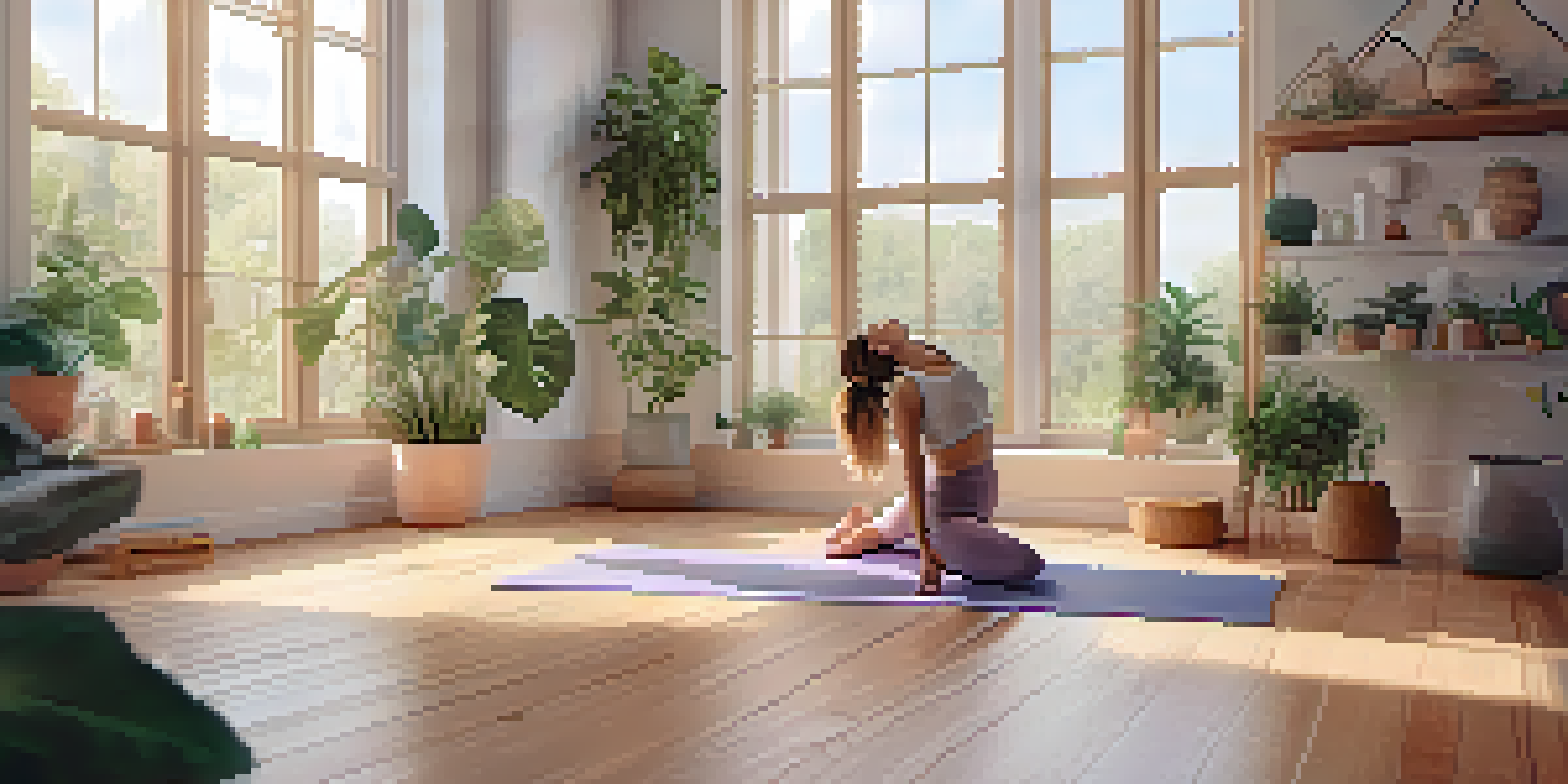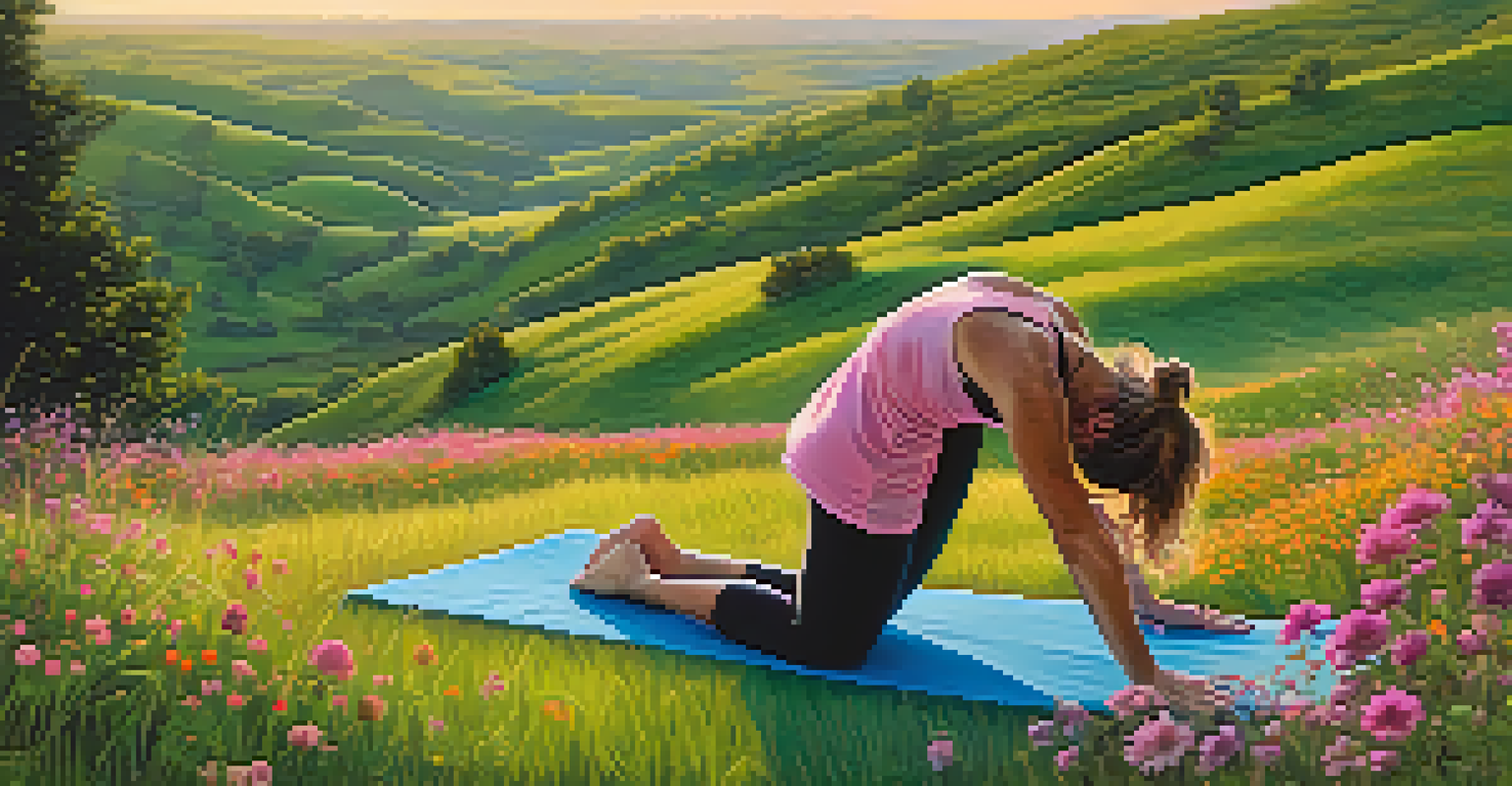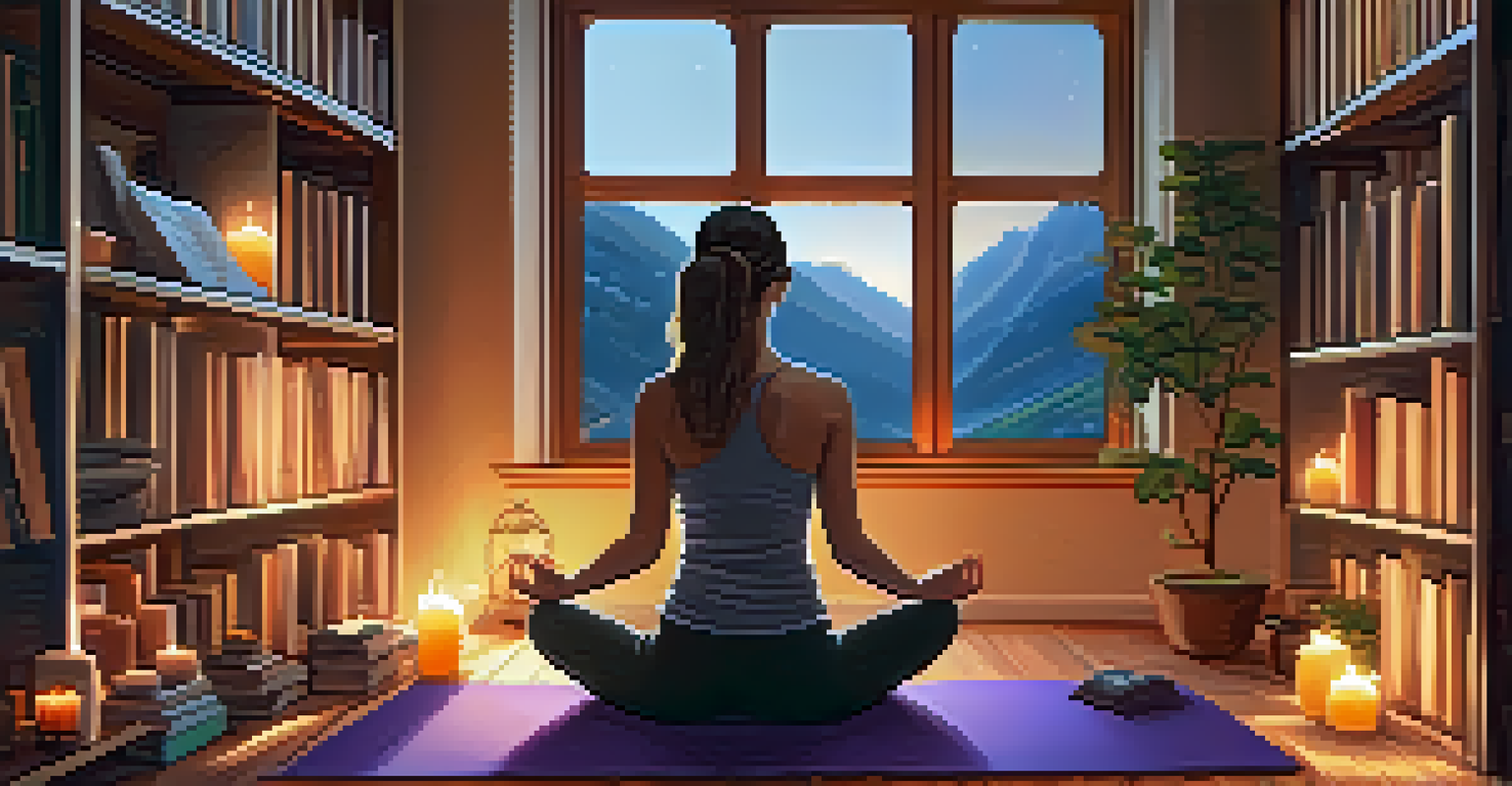Yoga Poses to Combat Tech-Induced Posture Issues

Understanding Tech-Induced Posture Issues
In today's digital age, many of us spend hours hunched over screens, leading to various posture-related problems. This tech-induced posture can result in tight shoulders, rounded backs, and even chronic neck pain. Understanding the root of these issues is crucial for finding effective solutions, like yoga.
Take care of your body. It's the only place you have to live.
Our bodies are designed for movement, but prolonged sitting can create imbalances. When we slouch, we not only affect our spine but also our overall mood and energy levels. Recognizing the signs of poor posture is the first step toward making meaningful changes.
Yoga presents a holistic approach to counter these tech-induced problems by promoting flexibility, strength, and alignment. Through targeted poses, we can help restore our natural posture and alleviate discomfort. Let's explore some key yoga poses that can make a significant difference.
The Importance of Stretching for Posture
Stretching serves as a vital tool in correcting the imbalances caused by technology use. It helps release tension built up in the muscles, particularly around the neck, shoulders, and back. By incorporating regular stretches into your routine, you can promote better posture and overall well-being.

Many people underestimate the power of simple stretches, often thinking they need to perform complex movements to see results. In reality, even a few minutes of targeted stretching can yield significant benefits. Stretching not only improves flexibility but also enhances blood circulation, making you feel more energized.
Tech-Induced Posture Problems
Prolonged screen time leads to poor posture, resulting in discomfort and imbalances in our bodies.
To maximize the benefits of stretching, integrate it into your daily routine. Whether it's a quick break during work or a dedicated session before bed, your body will thank you. Now, let’s dive into specific yoga poses that can help combat those pesky tech-induced posture issues.
Child’s Pose: A Gentle Release for the Back
Child’s Pose is a restorative yoga posture that gently stretches the back while promoting relaxation. To get into this pose, kneel on the floor, sit back on your heels, and extend your arms forward on the ground. This position helps to elongate the spine and relieve tension in the lower back.
Movement is a medicine for creating change in a person's physical, emotional, and mental states.
As you breathe deeply in Child’s Pose, focus on letting go of any stress or discomfort stored in your body. This pose is particularly beneficial for those who spend long hours sitting, as it counteracts the effects of slouching. It also encourages mindfulness, allowing you to tune into your body’s needs.
Consider incorporating Child's Pose into your daily routine, especially during work breaks. It’s a simple yet effective way to reset your posture and clear your mind. With just a few minutes, you can feel the soothing effects this pose has on your body.
Cat-Cow Stretch: Improve Spine Flexibility
The Cat-Cow stretch is a dynamic movement that promotes spinal flexibility and strength. Transitioning between the two positions helps open the chest while stretching the back, making it perfect for alleviating tech-related tension. Start on your hands and knees, arch your back while inhaling for Cow Pose, and round your spine while exhaling for Cat Pose.
This sequence not only feels great but also helps improve your overall posture. By encouraging the natural curvature of the spine, the Cat-Cow stretch can help counteract the effects of prolonged sitting. Plus, it's an excellent way to warm up before diving into more challenging poses.
Yoga as a Solution
Incorporating yoga into your routine can effectively alleviate tech-induced posture issues by promoting flexibility and strength.
Incorporate Cat-Cow into your morning routine or as a mid-day pick-me-up. This stretch can help reset your posture and bring awareness to your body, allowing you to feel more aligned throughout the day. It’s a simple yet effective tool in your yoga arsenal.
Downward Dog: Strengthen and Stretch
Downward Dog is a powerful pose that stretches multiple muscle groups while building strength. By pressing your heels toward the ground and lifting your hips high, you create a lengthening effect throughout your entire body. This pose can help counteract the rounded shoulders and tight hamstrings that often result from poor posture.
As you hold Downward Dog, focus on maintaining a straight spine and engaging your core. This will not only help improve balance but also reinforce better posture habits. It's a great pose to practice whenever you need a quick physical and mental boost.
Try incorporating Downward Dog into your regular yoga practice or even as a brief stretch during long hours at your desk. It’s an energizing pose that can help you feel more grounded and aligned, making it an essential part of combating tech-induced posture issues.
Seated Forward Bend: Release Tension in the Spine
The Seated Forward Bend is an excellent way to stretch the spine while calming the mind. By sitting with your legs extended and gently reaching for your toes, you can alleviate tension in the lower back and hamstrings. This pose encourages a deep stretch that feels especially satisfying after hours of sitting.
In addition to its physical benefits, the Seated Forward Bend also promotes mindfulness and deep breathing. As you lean forward, focus on the sensations in your body, allowing yourself to let go of stress and distractions. This pose can serve as a form of meditation in motion, enhancing your overall yoga practice.
The Power of Simple Stretches
Regular, targeted stretching can significantly improve posture and overall well-being, even with just a few minutes each day.
Make the Seated Forward Bend a part of your daily routine, whether you practice it in the morning or as a relaxing wind-down before bed. It can help reset your posture and create a sense of peace, making it a valuable tool for anyone dealing with tech-induced posture issues.
Bridge Pose: Strengthening the Back and Hips
Bridge Pose is a fantastic way to strengthen the back, glutes, and hips while opening the chest. Lying on your back with your knees bent, you lift your hips toward the ceiling, creating a bridge-like shape. This pose not only tones the muscles but also helps reverse the effects of prolonged sitting by counteracting tightness in the hips.
As you hold Bridge Pose, focus on engaging your core and maintaining a strong foundation through your feet. This will help you achieve better alignment and stability, enhancing the benefits of the pose. It’s a great option for those looking to build strength while also promoting relaxation.

Incorporate Bridge Pose into your yoga routine to create balance between strength and flexibility. It’s particularly useful for those who find themselves sitting for extended periods, as it encourages better posture and relieves tension in the body.
Incorporating Yoga into Daily Life
Incorporating yoga into your daily life doesn't have to be a daunting task. Start with just a few minutes each day, focusing on specific poses that target tech-induced posture issues. Consistency is key, and even short sessions can yield significant benefits over time.
Consider setting reminders throughout your day to take a moment for a quick stretch or yoga pose. Whether it's during work breaks or after dinner, these small adjustments can help you stay mindful of your posture and well-being. It’s all about finding what works best for you and your lifestyle.
As you integrate yoga into your routine, you’ll likely notice improvements not only in your posture but also in your overall mood and energy levels. Embrace the journey and enjoy the process of discovering new poses that resonate with you. Remember, every little bit counts!